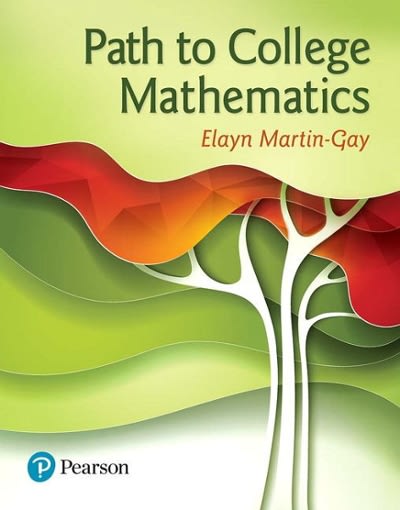Question
1.When an independent sample is selected, are the same or different participants observed in each group? 2. In the following studies, state whether you would
1.When an independent sample is selected, are the same or different participants observed in each group?
2. In the following studies, state whether you would use a one-sample t test or a two-independent-sample t test.
a. A study testing whether night-shift workers sleep the recommended 8 hours per day
b. A study measuring differences in attitudes about morality among men and women
c. An experiment measuring differences in brain activity among rats placed on either a continuous or an intermittent reward schedule
3. State the degrees of freedom for the t test for each of the following
situations in which two groups are observed.
a.A study in which 12 participants are assigned to one group and 15 participants are assigned to a second group
b. A study in which 30 participants are selected, then half are observed in Group 1, and half in Group 2
c.A study in which researchers compare the standardized test scores between a class of 20 psychology students and a class of 26 biology students
4. State the critical values for a two-independent-sample t test given
the following conditions:
a.Two-tailed test, = .01, total df =26
b.One-tailed test, lower-tail critical, = .01, df = 15 for each group
c.Two-tailed test, = .05, n = 12 in each group
d.One-tailed test, upper-tail critical, = .05, n for both groups combined is 30
5. A study evaluating the effects of parenting style (authoritative, permissive) on child well-being observed 20 children (10 from parents who use an authoritative parenting style and 10 from parents who use a permissive parenting
style). Children between the ages of 12 and 14 completed a standard child health questionnaire where scores can range between 0 and 100, with higher scores indicating greater well-being. The scores are given in the table.
(Authoritative: M=65.00; Variance=83.36) (Permissive: M=73.50; Variance=111.30)
Authoritative parenting: 60, 65, 70, 65, 80, 50, 75, 55, 60, 70
Permissive parenting: 80, 75, 55, 85, 90, 65, 70, 65, 70, 80
a.Test whether or not child health scores differ between groups using a .05 level of significance. State the value of the test statistic and the decision to retain or reject the null hypothesis
b.Compute effect size using estimated Cohen's d
6. Individual actions can play a large role in the overall health of our planet. A researcher interested in evaluating environmentally friendly behaviors evaluated how often people recycle (per month) based on whether they have an overall optimistic or an overall pessimistic attitude toward eco-friendly behaviors. The results from this hypothetical study are given in the table.
(Authoritative: M=65.00; Variance=83.36) (Permissive: M=73.50; Variance=111.30)
Pessimistic: 3, 0, 4, 2, 1,6, 3, 5, 0, 5
Optimistic: 4, 9, 6, 8, 9, 5, 6, 8, 6, 7
a. Test whether or not recycling behaviors differed between groups using a .05 level of significance. State the value of the test statistic and the decision to retain or reject the null hypothesis.
b.Compute effect size using eta-squared (2).
Step by Step Solution
There are 3 Steps involved in it
Step: 1

Get Instant Access to Expert-Tailored Solutions
See step-by-step solutions with expert insights and AI powered tools for academic success
Step: 2

Step: 3

Ace Your Homework with AI
Get the answers you need in no time with our AI-driven, step-by-step assistance
Get Started


